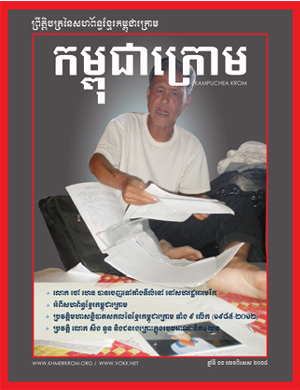Our panel of experts willanswer your queries. Periodic table block Positive ions Negative ions s 93% 7% f 88% 12% d 49% 51% p 32% 68% . adding the number of neutrons and protons together. The alkaline earth metals (IIA elements) lose two electrons to form a 2+ cation. If you look at the periodic table, you will find the metals in groups (from one to 16). All the halogens gain a single electron to fill their valence energy level. Protons in the tables are positively charged particles. Electrons in a polar covalent bond are shifted toward the more electronegative atom; thus, the more electronegative atom is the one with the partial negative charge. Properties of elements vary "periodically" depending on their atomic weight. The horizontal classification of the elements in the modern periodic table is known as a Period. Cadmium (Cd). The more strongly an atom attracts the electrons in its bonds, the larger its electronegativity. 2022 Science Trends LLC. Alternatively, if a shell is more than half . There can be no doubt that any science student who is interested in chemistry must learn the . Electronegativity determines how the shared electrons are distributed between the two atoms in a polar covalent bond. The electrical charge that an atom achieves is sometimes called its oxidation state. Neutrons are the neutrally negative charge, and electrons are . Lucky Block New Cryptocurrency with $750m+ Market Cap Lists on LBank, Anions are formed from all the nonmetal elements, Duck-Billed Dinosaurs Uncovered In Aniakchak, Alaska, Cryptic Diversity In Vietnams Limestone Karst Habitats, An Improved Method To Remove Debris From Cyst Nematode Egg Suspensions And Computer-Aided Technologies For Egg Counting, The Footprints Of Urbanization, Industrialization, And Agriculture On River Beds: Heavy Metal Contamination Assessment And Source Identification In River Sediments In Eastern China, Aging Dolphins Via Pectoral Flipper Radiography, Glycoalkaloids In Potatoes: The Effect Of Biostimulants And Herbicides. hno polar or nonpolar hno polar or nonpolar. Wonder is the heaviest element on the perioid table. The first shell of an atom can only hold two electrons, the second shell can hold eight electrons and the third shell can hold 16 electrons. Today, the elements of the Periodic . The periodic table is structured as an 18 X 7 grid, positioned above a smaller double row of elements. The total electrical charge of the nucleus is therefore +Ze, where e (elementary charge) equals to 1,602 x 10-19 coulombs. That means an atom with a neutral charge is one where the number of electrons is equal to the atomic number. Hydrogen is a chemical element with atomic number 1 which means there are 1 protons and 1 electrons in the atomic structure.The chemical symbol for Hydrogen is H. With a standard atomic weight of circa 1.008, hydrogen is the lightest element on the periodic table. Technetium (Tc). The best way to find out what the ionic charge for a specific element is is by checking the Periodic table. As electrolysis process has a lower affinity for electrons, the less electronegative anion forms at the anode, which is the positive electrode, in the electrolysis of molten mixtures. Group one is composed of metals that have a +1 charge, while all the metals in groups 2,3,4,5,6,7,8,9,10,11,12, and 16 have a charge +2. A) positive; 1 B) negative; 4 - 7 C)positive; four or less D) negative; three or less Answer- C)positive; four or less Group 4 Elements Here is the full list of metals in group four (+1 charge): Titanium (Ti). Atoms on the far left of the table, such as hydrogen and sodium, tend to form positive ions. The periodic table can also be broken down by name and mass depending on your interests. Figure \(\PageIndex{3}\):The Electron Distribution in a Nonpolar Covalent Bond, a Polar Covalent Bond, and an Ionic Bond Using Lewis Electron Structures. The color red is used to indicate electron-rich regions of a molecule while the color blue is used to indicated electron-poor regions. A negative charge. Ions are atoms with extra electrons or missing electrons. Group 11 Elements Here is the full list of metals in group eleven (+1 charge): Copper (Cu). Many of the transition metal ions have varying oxidation states. Rhodium (Rh). Ions indicated using a superscript after the element symbol that states whether the charge on the atom is positive (more protons) or negative (more electrons) and the quantity of the charge. Watch . Consequently, the bonding electrons are drawn away from the less electronegative carbon giving it a partial positive charge. All these elements are grouped in the Periodic Table in the following groups: 13, 14, 15, 16, and 17. Silicon is a chemical element with atomic number 14 which means there are 14 protons in its nucleus. Using the electronegativity values in Table A2, arrange the following covalent bondsall commonly found in amino acidsin order of increasing polarity. Accessibility StatementFor more information contact us atinfo@libretexts.orgor check out our status page at https://status.libretexts.org. In this scale a value of 4.0 is arbitrarily given to the most electronegative element, fluorine, and the other electronegativities are scaled relative to this value. Element symbol Ion Charge Ion Symbol . Elements with high electronegativities tend to acquire electrons in chemical reactions and are found in the upper right corner of the periodic table. As you look at the periodic table, you can see that some elements on the right side of the table would have two oxidation states written one positive and other a negative sign. Hint: When the charge on the ion is positive then the element is called electropositive and if the charge on the ion is negative then the element is electronegative. The material constants of the FGPM substrate change exponentially along the thickness direction. If studying the periodic table taught me nothing else, its that the credulity of human beings for periodic table panaceas is pretty much boundless. Alvin W. Orbaek is a research assistant at Rice University, Houston, Texas, where he is completing his PhD in chemistry.
","hasArticle":false,"_links":{"self":"https://dummies-api.dummies.com/v2/authors/9692"}}],"_links":{"self":"https://dummies-api.dummies.com/v2/books/282297"}},"collections":[],"articleAds":{"footerAd":"","rightAd":""},"articleType":{"articleType":"Articles","articleList":null,"content":null,"videoInfo":{"videoId":null,"name":null,"accountId":null,"playerId":null,"thumbnailUrl":null,"description":null,"uploadDate":null}},"sponsorship":{"sponsorshipPage":false,"backgroundImage":{"src":null,"width":0,"height":0},"brandingLine":"","brandingLink":"","brandingLogo":{"src":null,"width":0,"height":0},"sponsorAd":"","sponsorEbookTitle":"","sponsorEbookLink":"","sponsorEbookImage":{"src":null,"width":0,"height":0}},"primaryLearningPath":"Advance","lifeExpectancy":"Five years","lifeExpectancySetFrom":"2021-07-23T00:00:00+00:00","dummiesForKids":"no","sponsoredContent":"no","adInfo":"","adPairKey":[]},"status":"publish","visibility":"public","articleId":194253},"articleLoadedStatus":"success"},"listState":{"list":{},"objectTitle":"","status":"initial","pageType":null,"objectId":null,"page":1,"sortField":"time","sortOrder":1,"categoriesIds":[],"articleTypes":[],"filterData":{},"filterDataLoadedStatus":"initial","pageSize":10},"adsState":{"pageScripts":{"headers":{"timestamp":"2023-02-01T15:50:01+00:00"},"adsId":0,"data":{"scripts":[{"pages":["all"],"location":"header","script":"\r\n","enabled":false},{"pages":["all"],"location":"header","script":"\r\npositive and negative elements on periodic tabledr kenneth z taylor released
·
Comments Off on positive and negative elements on periodic tableViews:
positive and negative elements on periodic table
positive and negative elements on periodic table
កម្ពុជាក្រោម មាន ២១ ខេត្ត តាំងពីពេលណាមក?
ប្រវត្តិតស៊ូដើម្បីខ្មែរក្រោម របស់ ព្រះតេជព្រះគុណ ឡឹម ខៃ
លទ្ធផល នៃ សន្និសីទអន្តរជាតិរបស់ សហព័ន្ធខ្មែរកម្ពុជាក្រោម
positive and negative elements on periodic table
positive and negative elements on periodic table
positive and negative elements on periodic table
positive and negative elements on periodic table
P.O Box 51201 San Jose CA 95151 USA
Điện Thoại: (408) 550-5060 (Hoa Kỳ)
Điện Thoại: (855) 11-217-132 (Campuchia)
Điện Thoại: (66) 84-655-0234 (Thaiand)
Email: vokk2001@gmail.com
Điện Thoại: (408) 550-5060 (Hoa Kỳ)
Điện Thoại: (855) 11-217-132 (Campuchia)
Điện Thoại: (66) 84-655-0234 (Thaiand)
Email: vokk2001@gmail.com















